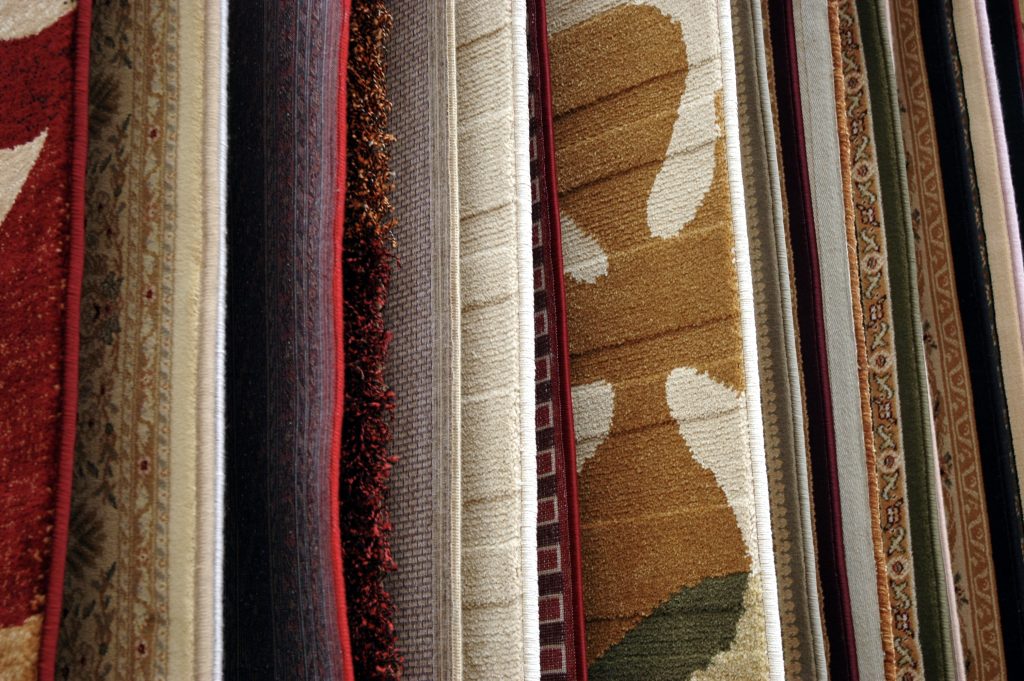
Choosing a rug is one of the most foundational design decisions you’ll make when decorating your home. A rug does much more than create softness underfoot – it defines the space, anchors your furniture, and brings your entire aesthetic together.
With so many sizes, patterns, and materials available, the options can feel overwhelming. This room-by-room guide to help you choose a rug that works for both your layout and lifestyle.
Table of contents
Rug selection tips
- When bigger is better
- How to map it out
- Choosing the right rug material
Best rugs by room
- Living room
- Dining room
- Bedroom
- Entryways, hallways, and kitchens
Final thoughts
Rug selection tips
When it comes to rugs, bigger is usually better
One of the most common rug-buying mistakes is choosing a rug that’s too small for the space. A rug that doesn’t reach under furniture or bring the room together visually can make everything feel disconnected and unfinished. Instead, aim for a size that ties your furniture together and provides a sense of balance. A larger rug creates a grounded look and ensures the placement feels intentional.
Stuck between sizes? When in doubt, mark it out
If you’re stuck between rug sizes, try mapping it out first. Try using painter’s tape to outline the dimensions of the rug directly on your floor. It’s a simple way to visualize how the rug will fit within the room and alongside your furniture. Experiment with different sizes and layouts!
Material Matters: Choose based on use
Rugs may look similar at first glance, but the material you choose has a big impact on how it performs over time. Here’s a quick guide to material options:
- Wool rugs are soft, naturally stain-resistant, and incredibly durable, ideal for high-traffic areas. They tend to be more expensive, but are a worthwhile investment.
- Cotton rugs are lightweight and easy to clean, though they may not hold up as long in busy rooms.
- Synthetic rugs like polypropylene are affordable, resilient, and a great choice for homes with pets or young children.
- Natural fibre rugs such as jute or sisal add beautiful texture and an organic feel, but are best suited for lower-traffic spaces or when layered under a softer rug.
Rugs by the room
Grounding your gathering space with the right rug
In large or open-concept living rooms, choose a rug big enough to fit all of the main pieces of furniture entirely on the rug, like the sofa, chairs, and coffee table. This will create a cozy, unified seating area.
In smaller living rooms, it’s okay if not every piece fits entirely on the rug. Instead, make sure the sofa’s back legs are against a wall and the front legs of all seating rest on the rug to keep the space visually balanced.
A good rule of thumb? When you sit down, your feet should land on the rug. It’s a small detail, but it makes the room feel much more pulled together.
Rug too small? Your dining room chairs will tell you
When selecting a rug for the dining room, consider the size of your table PLUS the space around your chairs when they are pulled out. Aim for at least 30 inches of clearance around the table on all sides so chairs remain on the rug, even when in use. For most dining spaces, rugs in the 8′ x 10′ or 9′ x 12′ range work well.
Since this area of the home is prone to spills, materials matter. Opt for low-pile, easy-to-clean rugs made from durable fibres. If you have kids, pets, or love to host, washable dining rugs might also be an option to consider.
In the bedroom, comfort starts underfoot
Bedrooms offer a bit more flexibility when it comes to rug layout. The size of the rug you choose depends greatly on what you’d like to be resting on top of the rug – is it just the bedframe, or accompanying furniture like nightstands and dressers? To keep things visually balanced, avoid leaving furniture half on, half off the rug. Refrain from placing a small rug at the foot or side of the bed on its own, as it can feel disconnected and out of scale.
Here are three common ways to position a rug in the bedroom:
- Just the lower third of the bed on the rug – a great option for smaller spaces or when you want to keep the look light and airy.
- A rug that extends slightly beyond the bed frame – enough to give your feet a soft landing on both sides.
- A rug large enough to fit the entire bed, nightstands, and even a dresser – perfect for a cohesive, fully grounded look in larger rooms.
Style meets function in entryways, hallways, and kitchens
In high-traffic areas like entryways and hallways, function and durability are key. A runner or a 2′ x 3′ rug can provide comfort while still protecting your floors, especially during wet or snowy months. Look for natural fibres or low-pile synthetics that are easy to clean and durable.
In the kitchen, a cushioned mat in front of the sink can make a big difference in comfort and support for homeowners who love to cook! Since this is a high-use space prone to spills, wipeable, washable and stain-resistant materials work best.
Final thoughts
Whether it’s a soft place for your feet to land when you get out of bed in the morning or creating a welcoming first impression at the door, a thoughtfully chosen rug can bring beauty, comfort, and personality to your home.





